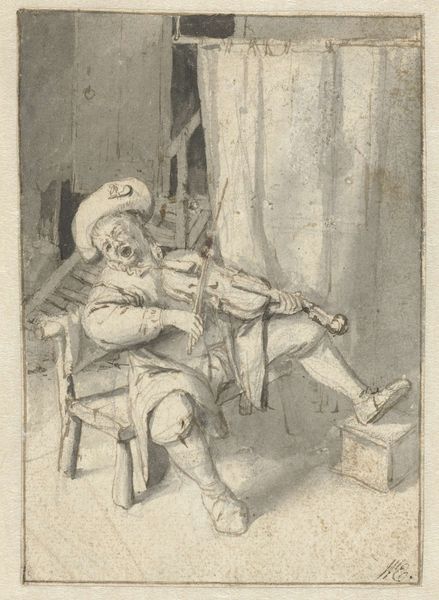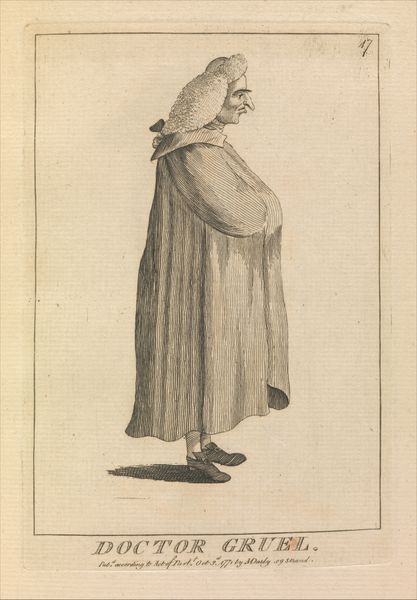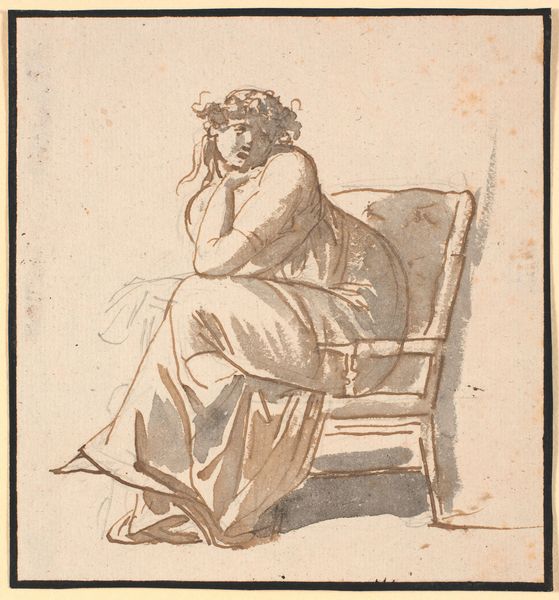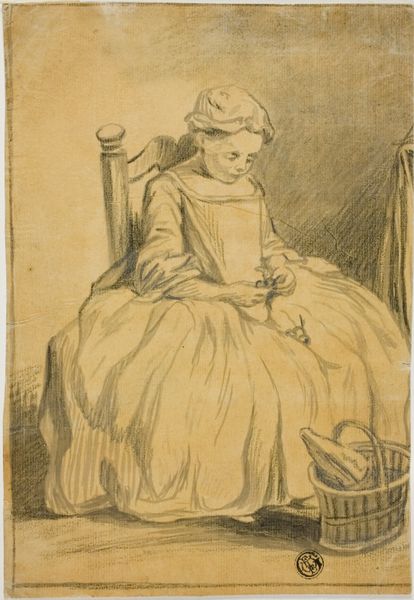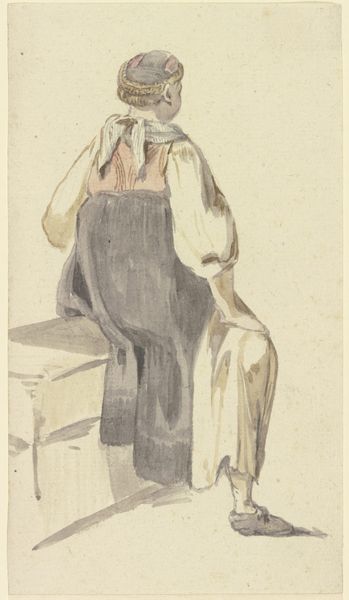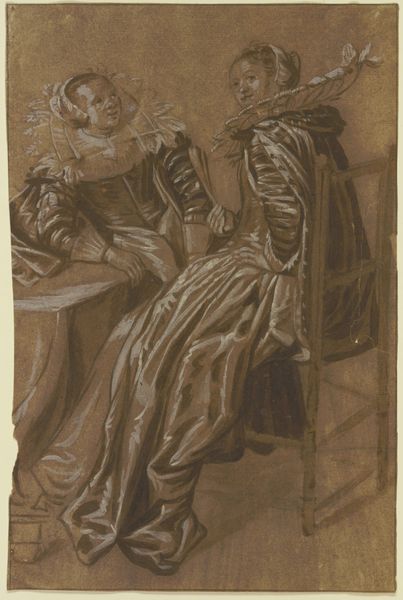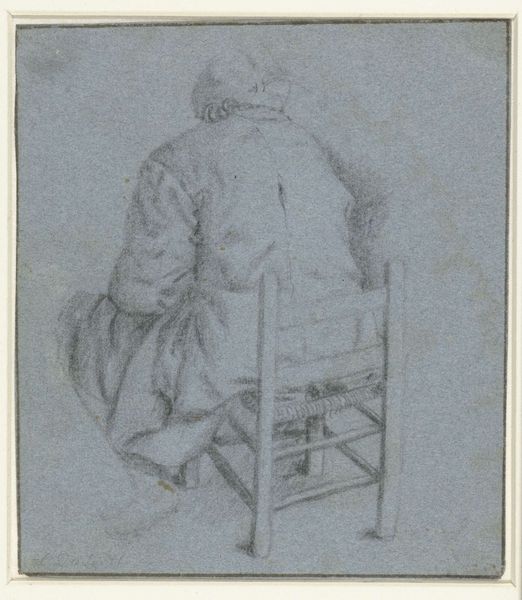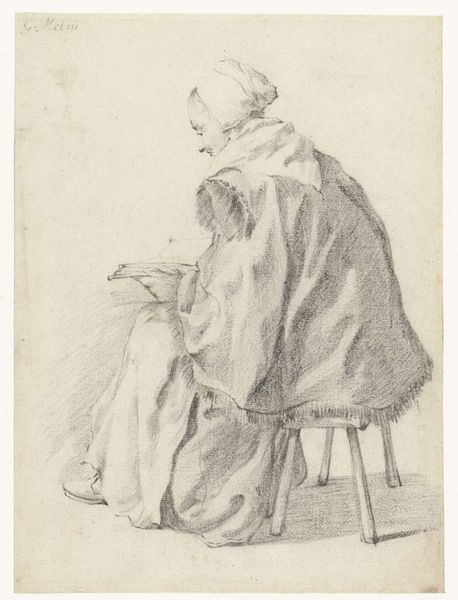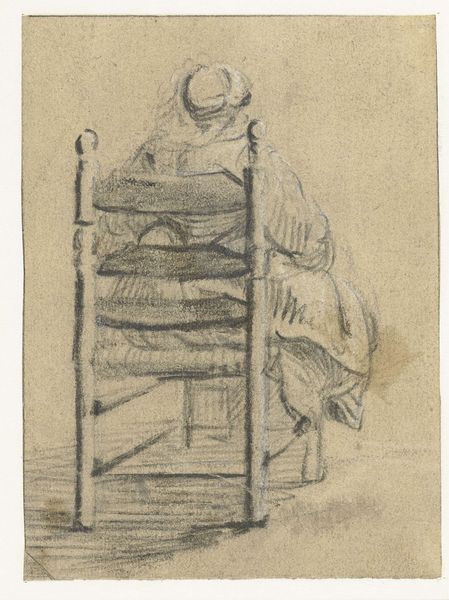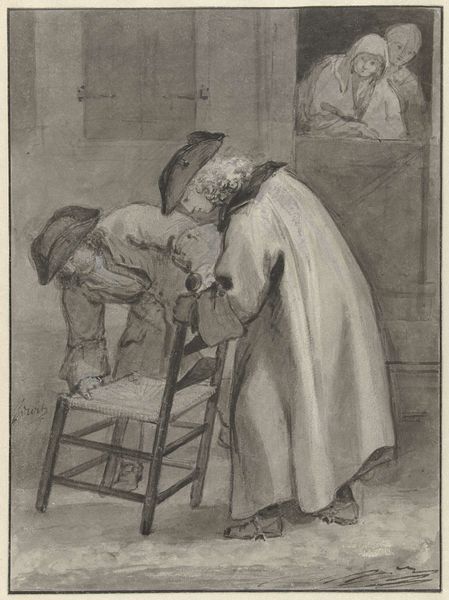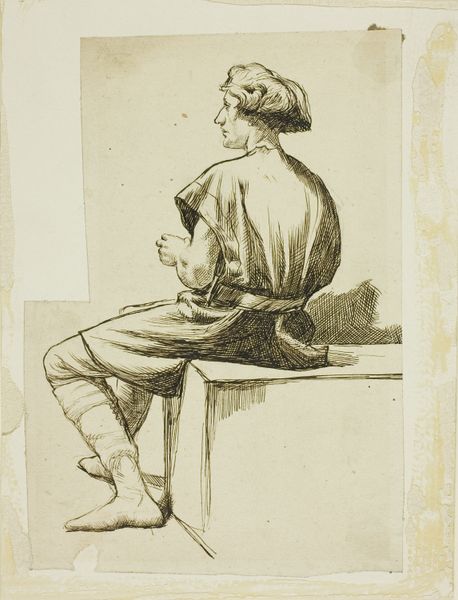
drawing, paper, charcoal
#
portrait
#
drawing
#
baroque
#
dutch-golden-age
#
charcoal drawing
#
paper
#
charcoal art
#
oil painting
#
portrait drawing
#
watercolour illustration
#
genre-painting
#
charcoal
Dimensions: height 270 mm, width 168 mm
Copyright: Rijks Museum: Open Domain
Editor: This is "Zittende man met zwaard," or "Seated Man with a Sword," by Dirck Hals, created sometime between 1601 and 1656. It's a charcoal drawing on paper, and it strikes me as surprisingly casual, given the subject's weapon and presumably, his status. What catches your eye in this piece? Curator: The apparent casualness, as you call it, is exactly what interests me. The medium of charcoal itself speaks to a certain accessibility, a departure from the more precious oils of the era. Consider the labor involved; charcoal production itself, the readily available paper. What social strata do you think this portrayal speaks to, moving away from the idealized portrayals we often see? Editor: That’s a great point. I hadn’t really thought about the accessibility of charcoal compared to oil paint. It almost makes it seem like Hals was deliberately trying to democratize portraiture. Would this make this a sort of genre painting and not a formal potrait? Curator: Precisely. Think about the sword – not just as a symbol of power, but a manufactured object. Where was it made? By whom? And for what purpose? The 'genre' element adds a layer; this is a moment captured, not just a posed representation. This invites consideration of the everyday lives that existed beyond royal portraits. How does that consideration change how we view 'genre' vs. portrait? Editor: I guess it blurs the line between them. It makes me wonder about the man’s actual job. It doesn't show any clues through labor; there is a glass in his hand though. The materiality here prompts me to ask more about the subject's own life, what he does outside that specific portrayal in the artwork, and the manufacturing elements associated to create that piece. I understand now! Thanks! Curator: Exactly. Seeing the artwork with emphasis on the materiality is essential, shifting our perception, and bridging the gap between the art and the socioeconomic reality surrounding its creation and existence.
Comments
No comments
Be the first to comment and join the conversation on the ultimate creative platform.
